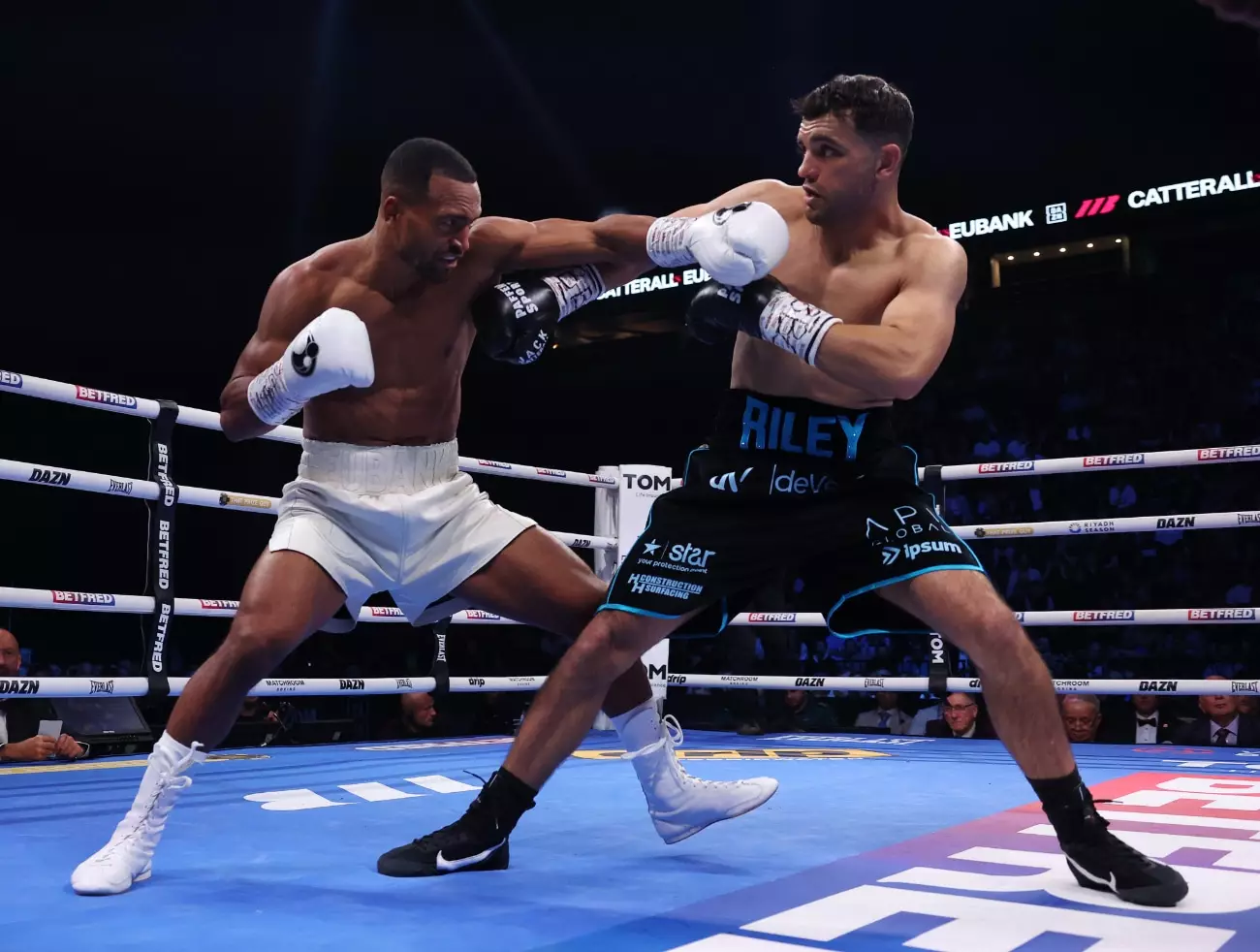The recent bout between Jack Catterall and Harlem Eubank was an exercise in resilience and perseverance, yet ultimately exposed the stark realities of stamina, skill, and strategic execution at the elite level. Catterall, a seasoned fighter with a commendable record, faced a credible challenge in Eubank, who entered the ring unbeaten. From the outset, it was evident that the contest would hinge on more than just raw power; it would be a mental test, a battle of endurance amid a less than thrilling exchange that failed to elevate the audience or showcase the best of either fighter’s repertoire.
The fight was marred with clinches, missed opportunities, and a conspicuous lack of fluidity—symptomatic of fighters who perhaps lacked the necessary sharpness. Catterall appeared to be a step slower, and his punches lacked the force guarantee that his previous performances might have promised. Simultaneously, Eubank’s aggressive posturing devolved into grabfest tactics, failing to capitalize on his natural physical advantages. Judging from a technical perspective, the fight was a frustrating watch; it revealed the gaps that fighters at this level must confront and overcome to reach world championship status.
The Controversy and the Impact of the Cut
The culmination of the bout took a controversial turn, punctuated by a clash of heads causing a significant cut on Catterall’s brow. The ringside doctor’s decision to halt the fight—just a second into the seventh round—cut short any chance of a definitive outcome. From a broader vantage point, the stoppage was not merely a matter of medical safety but also a reflection on how fight circumstances can abruptly change the narrative.
Catterall’s reaction post-fight was one of frustration, a testament to his desire to demonstrate his capacity even under diminished physical prospects. What’s compelling is his call for an immediate rematch, illustrating his belief that he was on the verge of asserting dominance before the accident. This speaks to a fighter’s resilience and confidence in their skills, despite the visible struggles during the bout.
Eubank, meanwhile, expressed dissatisfaction with the stoppage, lamenting that he was just starting to find his rhythm and land punches. Both fighters seemed eager to see a rematch, but the boxing business operates on different realities. Promoter Eddie Hearn signaled a move toward bigger stakes—targeting a world title shot for Catterall rather than rematching Eubank.
Future Prospects and Strategic Moves
Eddie Hearn’s strategic shift is telling. The plan to position Catterall for a shot at the IBF title—vacated by Jaron Ennis—signals a desire to elevate the fighter’s profile in the boxing hierarchy. The pathway is clear: a win over the winner of the Crocker vs. Donovan fight, both regional fighters with potential to prove their worth at the world level.
However, this approach is not without its flaws. The current landscape of welterweight boxing is fiercely competitive, and the opponents Catterall could face are intentionally fringe-level—fighters like Crocker or Donovan—who might not truly test his limits. While these are logical steps to climb the ranking ladder, they risk reinforcing a pattern of fighters avoiding the most dangerous contenders early in their careers, ultimately delaying Catterall’s chance for true greatness.
The reluctance to pursue a fight with WBO champion Brian Norman Jr. reveals a strategic acknowledgment of risk versus reward. Norman’s punching power is a known threat, and stepping into the ring against him could be a gamble that exposes vulnerabilities. Nonetheless, this cautious approach raises questions about the fighter’s true ambitions: Is Catterall content with regional titles, or does he genuinely possess the hunger to test himself against the best?
The Bigger Picture: A Fighter’s Dilemma in Modern Boxing
Catterall’s journey reflects a common tension in boxing—balancing ambition with pragmatism. Fighters often find themselves at crossroads, where immediate victories are prioritized over long-term legacies. His recent fight, laden with frustrations and missed opportunities, underscores that raw talent alone isn’t enough; strategic planning, timing, and mental fortitude are equally vital in ascending the ranks.
The push for a future world title shot signals a desire to avoid stagnation and embrace the bigger stage. Yet, it’s worth pondering whether the current plan—facing developing fighters and sidestepping the most formidable opponents—will prepare Catterall for the true challenges that await at the summit of professional boxing. Confidence and ambition are essential, but so is a realistic acknowledgment of the hurdles ahead.
In the end, Catterall’s story is more than about one fight—it’s a testament to a boxer’s relentless pursuit of greatness amid the complexities of the sport. Whether this journey will culminate in a world championship remains to be seen, but his unwavering desire to improve, fight again, and reach the highest levels makes him a compelling figure in the welterweight division.

